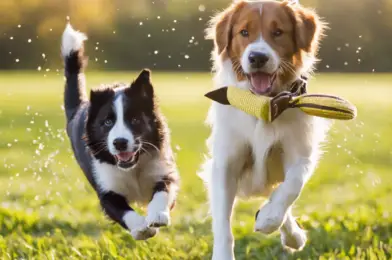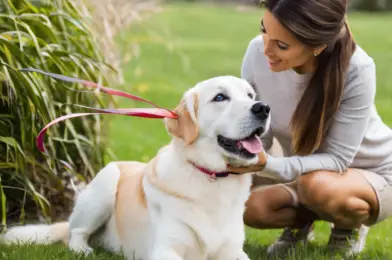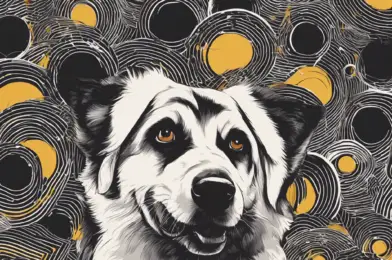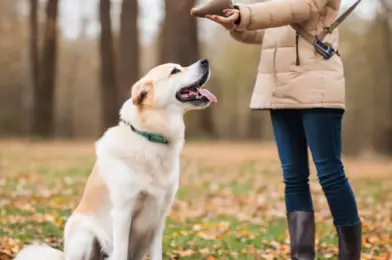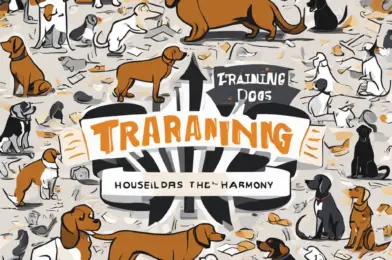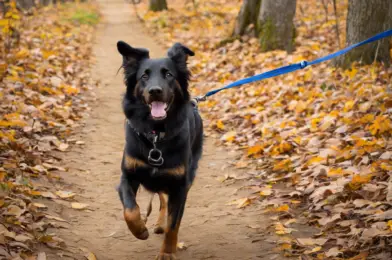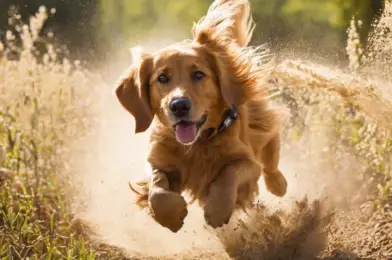# Off-Leash Training: Unleashing the Power of Trust and Freedom
Training your dog to be off-leash is an exciting and rewarding journey that can open up a world of freedom and adventure for both you and your furry friend. Off-leash reliability is not just about letting your dog run free; it’s about building a strong bond, fostering trust, and ensuring your dog’s safety in uncontrolled environments. In this comprehensive guide, we’ll explore the ins and outs of off-leash training, offering valuable insights and practical tips to help you navigate this exciting endeavor.
## Understanding the Basics: Why Off-Leash Training?
Off-leash training is an advanced form of dog training that teaches your canine companion to respond reliably to your commands, even without the physical constraint of a leash. This skill is invaluable for pet owners who wish to enjoy outdoor activities with their dogs, such as hiking, camping, or simply exploring a dog park. It allows your dog to experience the joy of uninhibited play while strengthening the connection between you and your pet.
One of the primary benefits of off-leash training is the sense of freedom it provides for your dog. Dogs are naturally curious and energetic creatures, and allowing them to roam freely can contribute to their overall happiness and well-being. Moreover, off-leash training can help your dog develop better social skills and self-control when interacting with other dogs and people.
## Building a Strong Foundation: Prerequisites for Off-Leash Success
Before embarking on off-leash training, it’s crucial to ensure that your dog has a solid foundation of basic obedience commands. These commands include sit, stay, come, heel, and leave it. If your dog can consistently respond to these cues while on a leash, you’ll have a much easier time transitioning to off-leash training.
Begin by training in a quiet, enclosed space to minimize distractions. Use positive reinforcement techniques, such as treats and praise, to reward your dog for obeying your commands. Consistency is key; practice these commands regularly, gradually increasing the distance between you and your dog to simulate off-leash conditions.
Additionally, it’s essential to have a reliable recall command, which is the cornerstone of off-leash training. Work on perfecting your dog’s recall by practicing in a secure environment and rewarding successful recalls with high-value treats. Building a strong recall will ensure your dog’s safety and responsiveness when off-leash.
## Choosing the Right Environment: Safety First
The environment in which you conduct off-leash training is critical to your dog’s safety and learning experience. Start by selecting a low-distraction area, such as a fenced backyard or a quiet park, where your dog can focus on you and the training tasks at hand.
Gradually introduce more stimulating environments, such as busy parks or trails, but always ensure that your dog is under control and responsive to your commands. Using a long-line leash (a long, lightweight leash) can be a valuable tool during this transitional phase, allowing you to maintain control while giving your dog more freedom to explore.
## Training Techniques: The Art of Off-Leash Communication
Off-leash training relies heavily on effective communication between you and your dog. Here are some essential training techniques to master:
– **Positive Reinforcement:** Continue using positive reinforcement to encourage desired behaviors. Treats, praise, and even favorite toys can be powerful motivators for your dog.
– **Gradual Progression:** Slowly increase the difficulty of training scenarios. Start with basic commands in a familiar environment, then introduce distractions and new locations gradually.
– **Proofing:** Proofing is the process of ensuring your dog’s reliability in various situations. Test your dog’s response to commands in different settings, with varying distractions, and around other people and animals.
– **Focus Exercises:** Teach your dog to maintain eye contact with you on cue. This skill helps in redirecting their attention and building impulse control.
– **Emergency Recall:** Train a special recall cue that signals an immediate return to you. This can be a life-saving command in unexpected situations.
## Overcoming Challenges: Troubleshooting Common Issues
Off-leash training may present some challenges, but understanding and addressing these issues is part of the learning process. Here are a few common challenges and tips to overcome them:
– **Distraction Management:** If your dog becomes overly excited or distracted, use focus exercises to regain their attention. Practice in areas with increasing levels of distraction to build their concentration.
– **Reliability with Other Dogs:** Socialization is key. Introduce your dog to various dogs in controlled environments, training them to interact politely and respond to your commands even when playing.
– **Distance Control:** Start with short distances and gradually increase the space between you and your dog. Use a long-line leash to practice until your dog consistently responds to your recall cue.
– **Reinforcing Good Behavior:** Always reward your dog for returning to you, even if they take a bit longer than expected. This reinforces the idea that coming back is a positive experience.
## Building Trust and Bonding: The Emotional Connection
Off-leash training is not just about obedience; it’s an opportunity to deepen your bond with your dog and build trust. Here’s how:
– **Patience and Consistency:** Be patient and consistent in your training approach. Dogs thrive on routine and predictability, so regular training sessions will help build their trust and confidence in you.
– **Positive Association:** Make training fun and rewarding. Use playtime and treats to create a positive association with off-leash training. This will encourage your dog’s enthusiasm and willingness to participate.
– **Celebrate Achievements:** Celebrate every milestone, no matter how small. Positive reinforcement and praise will reinforce your dog’s sense of accomplishment and strengthen your bond.
## Mastering Off-Leash Freedom: Tips for Success
Here are some additional tips to help you master the art of off-leash training:
– **Start Early:** Begin training as early as possible to establish good habits and make the process easier. Puppies are often more receptive to training, but older dogs can learn too, with patience and consistency.
– **Know Your Dog’s Limits:** Understand your dog’s personality and limitations. Some dogs may require more time and practice to build off-leash reliability, especially if they have high prey drive or are easily distracted.
– **Regular Practice:** Consistency is crucial. Regular training sessions, even short ones, will keep your dog’s skills sharp and reinforce their off-leash behavior.
– **Safety First:** Always prioritize safety. Stay alert and aware of your surroundings, and be prepared to manage unexpected situations. Carry a leash with you for emergency control if needed.
– **Stay Calm and Confident:** Dogs can sense your energy. Remain calm and confident during training sessions to inspire trust and encourage your dog to follow your lead.
In conclusion, off-leash training is a rewarding journey that empowers your dog with freedom and trust. By building a strong foundation of obedience, choosing safe environments, and utilizing effective communication, you can ensure your dog’s success in off-leash scenarios. Remember, patience, consistency, and positive reinforcement are the keys to unlocking your dog’s full potential. So, embark on this exciting adventure, and watch as your dog becomes a reliable and happy companion, both on and off the leash!

